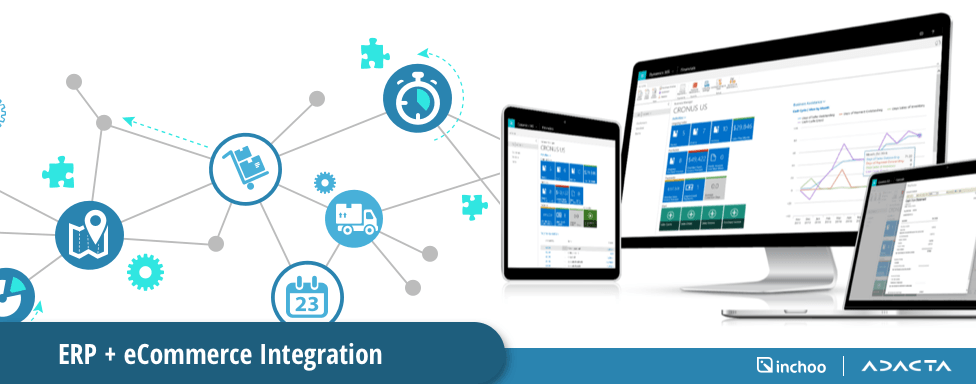For every serious eCommerce business, there comes a time to invest in implementing an ERP solution. For every serious business that already operates with an ERP system, there comes a time to open up a new sales channel, an eCommerce website.
In each of those cases, they need strong support from both ERP and eCommerce sides, and finding quality partners that can work together can be a hassle.
We are happy to have found a top notch ERP solutions integrator we can happily work with and recommend to our clients. We talked to Josip Penavić of Adacta, Gold ERP and CRM Microsoft Partner. Read on to learn firsthand some of the challenges and best practices of integrating eCommerce website with an ERP system.
Hi, Josip. First off, can you tell us a bit more about yourself and your role in Adacta?
I am the Sales Manager at Adacta. I’ve started my career in Adacta 9 years ago as Microsoft Dynamics Consultant, followed by the role in sales, where I’ve been working ever since.
I am looking after the sales team in our Zagreb office and usually, I like to say that the main goal of my role is to help companies choose the right solution that will bring added value to their business.
So, you’ve been involved in a number of ERP implementations. What are some of the most common industry verticals your clients are operating in?
This year we are celebrating 30 years of Adacta Group. We can proudly say that we’ve worked on more than 450 projects across various countries in Europe.
Even though this number includes BI and CRM projects as well, most of the projects are in fact ERP implementations. Our ERP projects involve industries such as Professional Services, Pharma Distribution, Utilities and Infrastructure Management, Retail and FMCG.
When thinking of ERP implementations, usually there’s a sense of huge complexity and very high budgets involved. Now, is that necessarily true? How can merchants streamline this process?
Usually, it’s true that the projects are complex. As for the high budgets being involved, I’d say it’s a relative term. One thing I have seen is that companies are usually missing the opportunity to revise and improve their business processes when implementing a new ERP solution.
Instead of changing the existing processes to match the industry’s best practices, they decide to customize ERP solution to work the same way their current processes are set up. And those usually aren’t necessarily optimised and structured in the best way.
One piece of advice to everyone deciding to implement an ERP solution is to set up realistic expectations and clearly define the benefits of solution implementation throughout the set-up timeframe.
What is your approach to, let’s say, an established business that handles most of their processes across various systems (online and offline) – what’s the most difficult part of the consolidation when they’re embracing a fully-fledged ERP system?
The most difficult part is to convince people to think outside the box and to see the benefits of change management. Microsoft Dynamics 365 is a global ERP solution that can help companies standardize business processes. To benefit from all these capabilities, decision-makers and key users need to be flexible and open to change.
Now, moving on to eCommerce and ERPs – we’ve worked on many integrations, on some even together with you. We have a good sense of some of the things everyone involved is going through. In your experience, what are some of the most common challenges for integrating ERP with an eCommerce platform? What creates bigger obstacles – technology or people (limitations of software solutions vs human factors like adapting to change)?
Surely there are challenges as every project brings its own specific challenges. Latest software solutions are so advanced that the technical challenges are minimised or at least acceptable. The biggest challenges come from the people, and I’ll share the two main challenges.
Firstly, for the client new solution presents a challenge to adapt to a new solution and a new way of doing business.
Secondly, there is a challenge to coordinate two separate teams to work as one in order to be able to deliver a solution built on the highest standards in the given timeframe.
For one of the existing clients we’ve worked together with your team, and luckily for us those challenges were minimal. Even though it was a scenario of two teams, two companies, two locations, we all had our eyes set on the same goal – to deliver an excellent and integrated solution for the customer. When you have the common goal and work in a very similar way using similar methodologies, those challenges from the implementation side are minimal.
On the client side, the new solution requires some training and challenging the old way of working. However, in the long run, it always proves to be a huge benefit for the company. The new solution brings more possibilities to optimise all business operations.
What would you advise to businesses looking to integrate their ERP system with a new sales and marketing channel that is an eCommerce website? Are there any tips and tricks to share?
Firstly, re-imagine your business. Think about the manual workflows that this integration will replace and how will the workflows look like once the solution is integrated. It’s important to be aware of the things that the existing solution was not able to support and consequently, you had to do manually.
New solution brings new possibilities that can improve your existing processes. Ask yourself what is the data that you need to integrate and what will data structure look like once the new solution is implemented.
Before you start implementing new solutions, define the way data will be connected between your ERP and eCommerce solution.
Once you know the answers to these questions, choose the partners that are highly skilled and have the industry know-how that will help you in this process of change.
And finally – I have a question for those who want to discuss their ERP plans. What’s the best way to get in touch with you or someone else from your team?
Call us, drop us an email or get in touch over the website or my LinkedIn profile. Even if you are just looking for advice, get in touch and we’ll be glad to discuss it with you over phone, email or a cup of coffee in our office. 🙂
If you are looking for assistance with your eCommerce and ERP integration, now we have you covered on both sides! Get in touch with us to learn even more and start planning!




